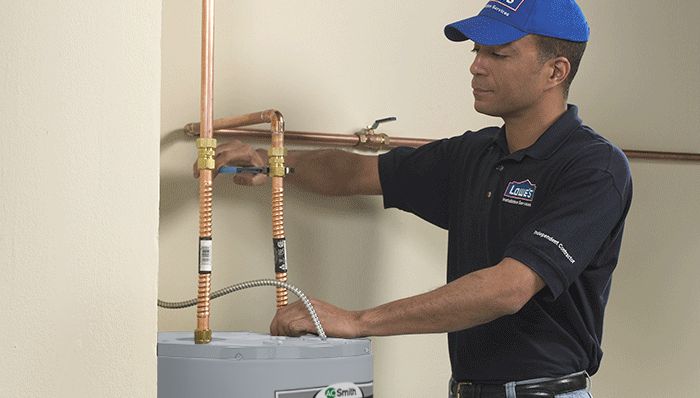The publisher is making a number of great points related to Tips For Maintaining Your Hot Water Heater as a whole in the content underneath.

Warm water is necessary for everyday comfort, whether it's for a rejuvenating shower or cleaning recipes. To guarantee your hot water system runs effectively and lasts longer, regular upkeep is essential. This short article gives functional tips and insights on just how to maintain your home's hot water system to stay clear of interruptions and expensive repair work.
Intro
Maintaining your home's warm water system may seem daunting, however with a few simple actions, you can guarantee it operates efficiently for several years to find. This guide covers every little thing from recognizing your warm water system to do it yourself maintenance tips and recognizing when to contact expert help.
Relevance of Preserving Your Hot Water System
Normal maintenance not only expands the life expectancy of your warm water system however also guarantees it runs effectively. Disregarding maintenance can cause decreased effectiveness, greater energy bills, and even early failing of the system.
Signs Your Warm Water System Needs Upkeep
Knowing when your warm water system needs focus can prevent major concerns. Watch out for indicators such as inconsistent water temperature level, unusual sounds from the heater, or rustic water.
Recognizing Your Warm Water System
Prior to diving into maintenance jobs, it's handy to understand the fundamental parts of your warm water system. Generally, this includes the hot water heater itself, pipelines, anode rods, and temperature controls.
Regular Monthly Upkeep Tasks
Normal monthly checks can help catch minor problems prior to they rise.
Flushing the Water Heater
Flushing your hot water heater gets rid of debris buildup, improving efficiency and extending its life.
Monitoring and Changing Anode Rods
Anode poles protect against corrosion inside the tank. Examining and replacing them when worn is important.
Checking and Readjusting Temperature Level Setups
Changing the temperature settings ensures optimum efficiency and security.
DIY Tips for Maintenance
You can execute several upkeep tasks yourself to maintain your hot water system in leading condition.
Checking for Leakages
Regularly evaluate pipes and links for leaks, as these can lead to water damages and higher costs.
Evaluating Stress Alleviation Valves
Evaluating the pressure relief valve ensures it functions correctly and protects against too much pressure accumulation.
Protecting Pipes
Protecting warm water pipelines minimizes warmth loss and can conserve power.
When to Call an Expert
While do it yourself upkeep is advantageous, some problems require specialist knowledge.
Facility Concerns Calling For Specialist Help
Examples consist of major leaks, electric issues, or if your hot water heater is constantly underperforming.
Regular Expert Upkeep Perks
Professional upkeep can consist of complete inspections, tune-ups, and ensuring compliance with safety criteria.
Final thought
Regular upkeep of your home's hot water system is essential for performance, longevity, and expense savings. By following these tips and recognizing when to look for expert assistance, you can ensure a dependable supply of hot water without unexpected disruptions.
How to Maintain an Instant Hot Water Heater
Before tinkering with your hot water heater, make sure that it’s not powered on. You also have to turn off the main circuit breaker and shut off the main gas line to prevent accidents. Also turn off the water valves connected to your unit to prevent water from flowing into and out of the appliance. 2. When you’re done, you have to detach the purge valves’ caps. These look like the letter “T†and are situated on either side of the water valves. Doing so will release any pressure that has accumulated inside the valves while at the same time avoid hot water from shooting out and burning your skin. 3. When the purge valves’ caps are removed, you have to connect your hosing lines to the valves. Your unit should have come with three hoses but if it didn’t, you can purchase these things from any hardware or home repair shops. You can also get them from retail stores that sell water heating systems. Read the user’s manual and follow it to complete this task properly. When the hosing lines are connected, open the purge port’s valves. 4. You should never use harsh chemical cleaners or solutions when cleaning your unit. Make use of white vinegar instead. It should be undiluted and you’ll probably use about 2 gallons. 5. Now flush your water heater. This task should probably take about 40 minutes. We can’t give you specific directions for this because the procedure is carried out depending on the type, model and brand of your heater. With that being said, refer to the user’s manual. 6. When you’re done draining the unit, you have to turn off the purge port valves again. Remove the hosing lines that you earlier installed on each of the water valves. Put the valve caps (purge port) back in their respective places and be very careful so as not to damage the rubber discs that are found inside these caps. 7. Now that everything’s back in place, check your user’s manual again to find out how to reactivate your water heating system. 8. Once it is working, turn one of your hot water faucets on just to let air pass through the heater’s water supply pipes. Leave the tap on until water flows smoothly out of it. https://www.orrplumbing.com/blog/2014/september/how-to-maintain-an-instant-hot-water-heater/

We were guided to that editorial on Water Heater Maintenance Tips You Can't Afford to Forget through an acquaintance on a different domain. Be sure to pause to distribute this write-up if you enjoyed reading it. Thanks a lot for going through it.
Visit